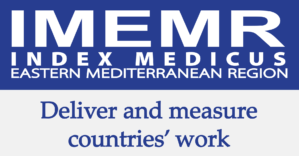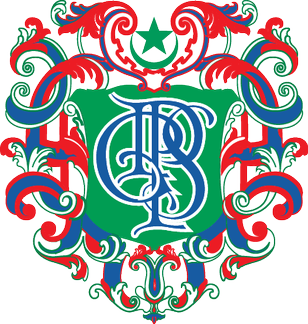Screening for Eating Disorder Using Eating Attitudes Test-26 and its Association with Eating Habits in Undergraduate Male University Students
DOI:
https://doi.org/10.53685/jshmdc.v4i1.131Keywords:
EAAT 26, Junk food, Eating disorder, PicaAbstract
Background: Students at colleges and universities are at a higher risk of developing an eating disorder. Insufficient data exist regarding the prevalence of eating disorders among male undergraduate university students.
Objective: To determine the frequency of eating disorder and its association with eating habits, junk food and Pica consumption among male undergraduates at the University of Sindh in Jamshoro.
Methods: This cross-sectional study was carried out between April 2018 and October 2018 at Sindh University in Jamshoro. Data was collected using Eating Attitudes Test (EAT-26) after getting informed consent. A total of 403 undergraduate male students filled out EAT-26 questionnaire. Items of disordered eating attitudes and behaviors were compared between the positive (having eating disorder) and negative EAT respondents using chi-square test.
Results: With a cutoff value of 20 of the EAT-26, 40.9% of students were found to be at risk for an eating disorder (EAT positive). The majority of study participants (79%) reported eating junk food. Seven percent of the participants reported eating Pica (non-food particles) like sand and plastic. Eating disorder was significantly associated with all the subscales of EAT-26. However Eating disorder was not significantly associated with junk food or with pica consumption.
Conclusion: A high number of male undergraduates are at risk of having eating disorder. Regular screening of male students and awareness about eating disorders is the need of time.
References
Hay P. Current approach to eating disorders: a clinical update. Intern Med J. 2020; 50(1): 24-29. doi:10.1111/imj.14691 DOI: https://doi.org/10.1111/imj.14691
AlHadi AN, Almeharish A, Bilal L, Al‐Habeeb A, Al‐Subaie A, Naseem MT et al. The prevalence and correlates of bulimia nervosa, binge‐eating disorder, and anorexia nervosa: The Saudi National Mental Health Survey. Int J Eat Disord. 2022; 55(11): 1541-1552. doi:10.1002/eat.23790 DOI: https://doi.org/10.1002/eat.23790
Robinson LD, Deane FP. Substance Use Disorder and Anxiety, Depression, Eating Disorder, PTSD, and Phobia Comorbidities Among Individuals Attending Residential Substance Use Treatment Settings. J Dual Diagn. 2022; 18(3):165-176. doi:10.1080/15504263.2022.2090648 DOI: https://doi.org/10.1080/15504263.2022.2090648
Fernández-Bustos JG, Infantes-Paniagua Á, Gonzalez-Martí I, Contreras-Jordán OR. Body dissatisfaction in adolescents: Differences by sex, BMI and type and organization of physical activity. Int J Environ Res Public Health. 2019; 16(17): 3109-3114. doi:10.3390/ijerph16173109 DOI: https://doi.org/10.3390/ijerph16173109
Bornioli A, Lewis-Smith H, Slater A, Bray I. Body dissatisfaction predicts the onset of depression among adolescent females and males: a prospective study. J Epidemiol Community Health.2021; 75(4): 343-348. doi:10.1136/jech-2019-213033 DOI: https://doi.org/10.1136/jech-2019-213033
Hudson JI, Hiripi E, Pope HG, Kessler RC. The prevalence and correlates of eating disorders in the National Comorbidity Survey Replication. Biol Psychiatry. 2007; 61(3): 348-358. doi:10.1016/j.biopsych.2006.03.040. DOI: https://doi.org/10.1016/j.biopsych.2006.03.040
Jahrami H, Sater M, Abdulla A, Faris ME, AlAnsari A. Eating disorders risk among medical students: a global systematic review and meta-analysis. Eat Weight Disord. 2019; 24(3): 397-410. doi:10.1007/s40519-018-0516-z DOI: https://doi.org/10.1007/s40519-018-0516-z
Sanchez-Ruiz MJ, El-Jor C, Abi Kharma J, Bassil M, Zeeni N. Personality, emotion-related variables, and media pressure predict eating disorders via disordered eating in Lebanese university students. Eat Weight Disord. 2019; 24(2): 313-322. doi:10.1007/ s40519-017-0387-8. DOI: https://doi.org/10.1007/s40519-017-0387-8
Austin A, Flynn M, Richards K, Hodsoll J, Duarte TA, Robinson P, et al. Duration of untreated eating disorder and relationship to outcomes: A systematic review of the literature. Eur Eat Disord Rev. 2021; 29(3): 329-45. doi:10.1002/erv.2745 DOI: https://doi.org/10.1002/erv.2745
Rajput N, Kumar K, Moudgil K. Pica an eating disorder: An overview. Pharmacophore. 2020; 11(4):11-14.
Hagopian LP, Rooker GW, Rolider NU. Identifying empirically supported treatments for pica in individuals with intellectual disabilities. Res Dev Disabil. 2011; 32(6): 2114-20. doi:10.1 016/j.ridd.2011.07.042 DOI: https://doi.org/10.1016/j.ridd.2011.07.042
Fawcett EJ, Fawcett JM, Mazmanian D. A meta-analysis of the worldwide prevalence of pica during pregnancy and the postpartum period. Int J Gynaecol Obstet. 2016; 133(3): 277-83. doi: 10.1016/j.ijgo.2015.10.012. DOI: https://doi.org/10.1016/j.ijgo.2015.10.012
Banik R, Naher S, Pervez S, Hossain MM. Fast food consumption and obesity among urban college going adolescents in Bangladesh: a cross-sectional study. Obes Med. 2020; 17: 100161 .doi: 10.1016/j.obmed.2019.100161. DOI: https://doi.org/10.1016/j.obmed.2019.100161
Whatnall MC, Patterson AJ, Siew YY, Kay-Lambkin F, Hutchesson MJ. Are psychological distress and resilience associated with dietary intake among Australian university students? Int J Environ Res Public Health. 2019; 16(21): 4099. doi:10.3390/ijerph16214099 DOI: https://doi.org/10.3390/ijerph16214099
Sanchez-Armass O, Raffaelli M, Andrade FCD, Wiley AR, Noyola ANM, Arguelles AC, et al. Validation of the SCOFF questionnaire for screening of eating disorders among Mexican university students. Eat Weight Disord. 2017; 22(1): 153–160. doi:10.1007/s40519-016-0259-7 DOI: https://doi.org/10.1007/s40519-016-0259-7
Mitsui T, Yoshida T, Komaki G. Psychometric properties of the eating disorder examination-questionnaire in Japanese adolescents. Bio Psycho Social Med. 2017; 11(1): 9-14. doi:10.1186/s13030-017-0094-8 DOI: https://doi.org/10.1186/s13030-017-0094-8
Garner DM, Olmsted MP, Bohr Y, Garfinkel PE: The Eating Attitudes Test: psychometric features and clinical correlates. Psychol Med. 1982; 12(4):871-878. doi:10.1017/s00332917000 49163. DOI: https://doi.org/10.1017/S0033291700049163
Khalid S, Razia ET, Raza MH, Sheikh H, Salman M, Shehzadi N, et al. It's not just a "female issue": eating attitudes and behaviors of Pakistani male and female pharmacy students. Russ. Open Med J. 2017; 6:e0406. doi:10.152 75/rusomj.2017.0406 DOI: https://doi.org/10.15275/rusomj.2017.0406
Aslam A, Laraib U, Afzal I, Zaib S, Riaz A, Ashfaq A, et al. Eating Attitudes of Female Pharmacy students in Pakistan: a Cross-Sectional Psychometric Study. Res Pharm Healt Sci. 2016; 2(1): 79-84. doi:10.32463/rphs.2016.v02i01.14 DOI: https://doi.org/10.32463/rphs.2016.v02i01.14
Memon AA, Adil SE, Siddiqui EU, Naeem SS, Ali SA, Mehmood K. Eating disorders in medical students of Karachi, Pakistan-a cross-sectional study. BMC Res Notes. 2012; 5:84. doi: 10.1186/1756-0500-5-84. DOI: https://doi.org/10.1186/1756-0500-5-84
Babar N, Alam M, Ali SS, Ansari A, Atiq M, Awais A, et al. Anorexic behaviour and attitudes among female medical and nursing students at a private university hospital. J Pak Med Assoc. 2002; 52(6): 272-276.
Mitchell JE, Crow S. Medical complications of anorexia nervosa and bulimia nervosa. Curr Opin Psych. 2006; 19(4):438-443.doi:10.1097/01.yco.0000228768.79 097.3e. DOI: https://doi.org/10.1097/01.yco.0000228768.79097.3e
Klemchuk HP, Hutchinson CB, Frank RI. Body dissatisfaction and eating-related problems on the college campus: Usefulness of the Eating Disorder Inventory with a nonclinical population. J Couns Psychol. 1990; 37(3): 297-305. doi:10. 1037/0022-0167.37.3.297 DOI: https://doi.org/10.1037//0022-0167.37.3.297
Sample C, Katzman MA, Wolchik SA, Braver SL. The prevalence of frequent binge eating and bulimia in a nonclinical college sample. Int J Eat Disord. 1984; 3(3): 53-62. DOI: https://doi.org/10.1002/1098-108X(198421)3:3<53::AID-EAT2260030305>3.0.CO;2-C
Hasan HA, Najm L, Zaurub S, Jami F, Javadi F, Deeb LA et al. Eating disorders and body image concerns as influenced by family and media among university students in Sharjah, UAE. Asia Pac J Clin Nutr. 2018; 27(3): 695-700. doi:10.6133/apjcn.062017.10
Downloads
Published
How to Cite
Issue
Section
License
Copyright (c) 2023 NOMAN SADIQ, Jamshed Warsi, Benazir Mahar, Tazeen Shah, Rozina Mangi, Ashfaq Ahmed Buriro, Ali Muhammad Memon

This work is licensed under a Creative Commons Attribution-NonCommercial 4.0 International License.
You are free to:
- Share — copy and redistribute the material in any medium or format
- Adapt — remix, transform, and build upon the material
- The licensor cannot revoke these freedoms as long as you follow the license terms.
Under the following terms:
-
Attribution — You must give appropriate credit, provide a link to the license, and indicate if changes were made. You may do so in any reasonable manner, but not in any way that suggests the licensor endorses you or your use.
-
Non Commercial — You may not use the material for commercial purposes.
-
No additional restrictions — You may not apply legal terms or technological measures that legally restrict others from doing anything the license permits.




















